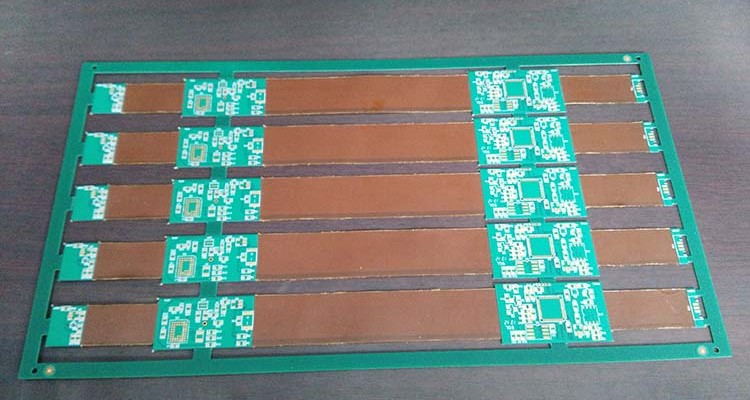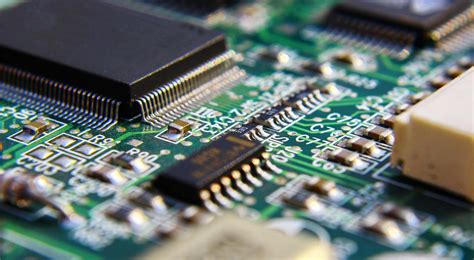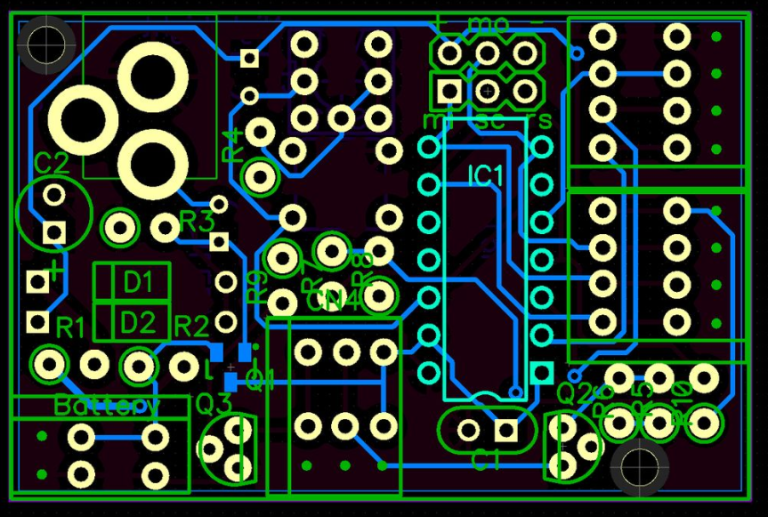Revolutionizing Manufacturing: The Rise of Automated Electronics Assembly
Key Takeaways
In the rapidly evolving world of electronics manufacturing, automated electronics assembly has emerged as a game-changer. By integrating advanced technologies into the production process, companies are able to achieve significant improvements in efficiency and precision. Key benefits include substantial cost savings and enhanced scalability. One of the standout advantages is the reduction of human error, which leads to higher consistency and superior quality control in PCB assembly (PCBA). These innovations not only streamline operations but also enable manufacturers to set new industry benchmarks. The result is a more reliable and versatile production environment that is equipped to meet increasing demands. As automation continues its upward trajectory, its pivotal role in driving the next industrial revolution becomes increasingly apparent.
Introduction to Automated Electronics Assembly
In recent years, the manufacturing sector has witnessed significant transformations driven by automated electronics assembly. This innovation is spearheading changes in how products are manufactured, particularly focusing on the assembly of Printed Circuit Boards (PCBs) or pcb assembly. Automated technologies streamline the entire production process from start to finish, resulting in notable improvements in efficiency and productivity. Through precise and repeatable processes, these systems help in minimizing errors that are commonly associated with manual assembly. The advent of automation in this domain has also brought substantial benefits such as cost reduction and scalability, enabling manufacturers to scale operations without a corresponding increase in labor costs. Furthermore, automated systems ensure a consistent output quality which is crucial for meeting stringent industry standards.
| Key Aspects | Benefits |
|---|---|
| Precision Assembly | Reduced Human Error |
| Cost Efficiency | Lower Production Costs |
| Scalability | Flexible Production Volumes |
| Quality Control | Improved Product Consistency |
The impact of PCBA technology cannot be overstated; it represents a pivotal development that will define the future of electronics manufacturing. By leveraging these automated solutions, manufacturers can achieve a higher level of productivity while maintaining superior quality—a combination that sets new benchmarks in industrial practices.
Key Technological Advancements in Automation
The rise of automated electronics assembly has ushered in a new era of efficiency and precision within the manufacturing industry. Key advancements such as surface mount technology (SMT) and robotic arms have transformed the way pcb assembly is conducted, significantly enhancing both speed and accuracy. By leveraging advanced robotics and machine learning algorithms, automated systems can perform complex assemblies with minimal human intervention, vastly reducing the likelihood of human error.
“Automated pcb processes ensure uniformity and consistency, setting a new standard for quality in electronics manufacturing.”
Innovations such as pick-and-place machines streamline the placement of components on printed circuit boards (PCBs), while automated optical inspection (AOI) systems meticulously check for defects, ensuring top-notch product quality. These technologies not only improve efficiency but also allow for greater scalability. For instance, modern PCBA systems can easily be scaled to accommodate increased production demands without compromising the integrity of the output.
Overall, these advancements illustrate a pivotal shift towards more sustainable and reliable manufacturing practices. The integration of AI-driven analytics further enhances system diagnostics and maintenance schedules, preemptively identifying potential issues before they become critical.
“Adopting these cutting-edge technologies offers manufacturers a significant competitive edge by reducing downtime and optimizing resource utilization.”
In summary, automated electronics assembly is redefining industry standards, providing unparalleled reliability and paving the way for future innovations in manufacturing processes.
Enhancing Efficiency and Reducing Human Error
In the realm of automated electronics assembly, technological advancements have greatly optimized production workflows, thus enhancing efficiency and reducing the likelihood of human error. Traditional methods of PCB assembly were often prone to mistakes due to manual handling, but automation solutions—such as robotic arms and AI-driven inspection systems—have significantly minimized these risks. Automated processes ensure that each step in the PCBA is executed with precision, resulting in higher throughput rates and consistent quality. By adopting these cutting-edge technologies, manufacturers can ensure that errors which previously led to costly reworks and wasted materials are largely eliminated. The result is a production environment where efficiency is maximized, human error is minimized, and overall operational costs are reduced. This transformation in electronics manufacturing exemplifies how automation not only meets current industry demands but also sets the stage for future advancements.
Cost Savings and Scalability in Modern Manufacturing
One of the most significant advantages of implementing automated electronics assembly is the substantial cost savings it offers. By integrating automated systems, manufacturers can reduce labor costs as tasks traditionally carried out by humans are now performed by machines with unmatched precision. This leap in technology has also paved the way for pcb assembly (PCBA), where machines handle the sophisticated and delicate placement of components on printed circuit boards. The cost efficiencies extend beyond labor; automated systems optimize material usage and reduce waste, ensuring that resources are utilized more effectively. Moreover, automation contributes to scalability in production lines, enabling manufacturers to swiftly adapt to market demands without compromising on quality or incurring prohibitive costs. With automated processes, production volumes can be adjusted seamlessly, ensuring that supply aligns perfectly with demand. This capacity for scalability has transformed modern manufacturing, making it more agile and responsive to changes in consumer needs and technological advancements. Ultimately, these benefits underscore how automation is setting a new standard in manufacturing efficiency and product consistency.
Consistency and Quality Control: The New Standards
In the realm of automated electronics assembly, maintaining consistency and ensuring quality control have set unprecedented standards. The integration of advanced technologies has revolutionized the process of PCB assembly (PCBA), allowing for precise and repeatable manufacturing that minimizes variability. Automation systems meticulously handle components, ensuring each stage from placement to soldering adheres to stringent specifications. This transformation has significantly reduced the incidence of human error, leading to a higher rate of first-pass yield and superior product quality. Employing sophisticated sensors and real-time monitoring systems, these automated solutions provide instant feedback and enable rapid adjustments, fostering an environment where quality is continuously maintained. This evolution in manufacturing paradigms not only enhances operational efficiency but also elevates the overall reliability and performance of electronic products. Such advancements underscore the pivotal role that automation plays in setting new benchmarks for consistency in the electronics industry, contributing to a future characterized by impeccable precision and dependable quality standards.
Future Trends in Electronics Assembly Automation
As the landscape of electronics manufacturing continues to evolve, ## Future Trends in Electronics Assembly Automation point to increasingly sophisticated methods for pcb assembly and pcba. Emerging technologies such as artificial intelligence, machine learning, and the Internet of Things (IoT) are expected to further enhance automated systems. These innovations not only streamline production processes but also lead to unparalleled levels of precision and efficiency. For instance, AI-driven algorithms can predict potential failures in real-time, enabling preemptive maintenance and reducing downtime. This trend towards intelligent automation will enable factories to operate with minimal human intervention, thereby decreasing the likelihood of errors and inconsistencies. Additionally, advancements in robotics are paving the way for greater flexibility in assembly lines, allowing for rapid adaptation to different product designs without significant reconfiguration. As the industry continues to push the boundaries of what is possible with automated systems, future-proofing manufacturing setups through scalable and adaptable solutions is becoming a critical focus. With continuous improvements in automation, the potential for cost savings will expand exponentially, further solidifying its role as a cornerstone of modern manufacturing practices. These developments are set to usher in a new era where high-quality, efficient production becomes the norm across the electronics sector.
The Role of Automation in the Next Industrial Revolution
The advent of automated electronics assembly marks a pivotal point in the dawn of the next industrial revolution. As pcba systems evolve, they are redefining how electronics are manufactured by minimizing manual intervention and maximizing precision. Automated processes ensure that PCB assembly is conducted with heightened accuracy, reducing the margin for error and optimizing production timelines. The integration of robotics and AI in assembly lines heralds a new era where machines can perform intricate tasks with consistent quality, leading to significant cost savings and improved scalability. These advancements are not just enhancing operational efficiency but are also setting new industry benchmarks for consistency and quality control. As manufacturers continue to adopt these technologies, the landscape of electronics manufacturing is poised to be transformed, driving the next wave of industrial innovation.
Conclusion
In summary, the dawn of automated electronics assembly is unequivocally transforming the manufacturing industry. By integrating advanced automation technologies, companies can achieve unprecedented levels of efficiency and precision. This shift not only boosts production speeds but also significantly reduces human error, leading to improved product consistency and quality. Crucially, automated systems in pcb assembly and pcba provide substantial cost savings and scalability, positioning manufacturers to meet growing market demands swiftly. As we move forward, these innovations are poised to play a pivotal role in spearheading the next wave of industrial revolution, setting new standards for excellence in electronics manufacturing.
Frequently Asked Questions
Automated electronics assembly has rapidly become a cornerstone in modern manufacturing. Below are some frequently asked questions that provide further insights into this transformative technology:
What is automated electronics assembly?
Automated electronics assembly, often referred to as PCB assembly or PCBA, involves the use of automated machinery to place and solder components onto printed circuit boards (PCBs). This process significantly enhances precision and efficiency.
How does automated electronics assembly improve efficiency?
By employing advanced robotics and software, automated systems can perform repetitive tasks at high speeds with minimal errors. This not only reduces the time required for PCB assembly but also minimizes the likelihood of defects, leading to higher productivity and lower production costs.
What are the cost benefits of using automated technology in electronics manufacturing?
The initial investment in automation technology can be substantial; however, over time, it results in significant cost savings. These savings stem from reduced labor costs, minimized errors that lead to less waste, and increased production speeds. Overall, automation enables scalability that manual processes cannot match.
How does automation ensure product quality and consistency?
Automated systems adhere to stringent quality control standards. Each PCBA is assembled with precise accuracy, ensuring that all components are correctly placed and soldered. This consistency leads to high-quality end products with fewer returns or failures in the field.
For more detailed information on how automated electronics assembly is revolutionizing manufacturing, please click here.
By addressing common queries about automated PCB assembly, we hope to shed light on why this technology is becoming indispensable for modern manufacturers.







